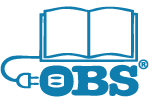As a member of the Book Industry Study Group (BISG)‘s Workflow Committee, OBS’s Laura Fillmore contributed to the recent White Paper on standardizing publishing workflows: “Fixing the Flux: Challenges and Opportunities in Publishing Workflows.” Where medical doctors have “Grey’s Anatomy” to refer to as a core reference resource for human anatomy, publishing professionals have no one “publishing handbook” to refer to that contains comprehensive workflow standards spanning print and electronic publishing. There exists no set of standard courses and universally recognized academic publishing degree that give one the right to practice publishing.
As a sound understanding of the human body is foundational to a doctor being able to successfully practice medicine, so is adherence to standardized workflows essential to publishing. Readers rely on publishers they trust for truth in content. For example, we expect that the recipes found in a cookbook bearing a Knopf logo will contain accurate measurements and instructions, and will come out right, bearing tasty results; we expect the “New York Times” to carefully curate, fact check, and proofread its news articles. Such truth in content results from teamwork among a group of publishing professionals who specialize in areas such as content acquisition, editing, fact checking, design, indexing, proofreading, and project management. The roles they play, the standards and expectations for the work each one does, and the checks and balances contained in their workflows all contribute to truth in content.
In our inter-networked world, multinationals increasingly control the professional publishing space, coexisting with individuals, bots, and other entities who also use the same networks and applications to publish in formats ranging from curt tweets blasted out every few minutes to voluminous self-published treatises. Then there are informal communications — also using the same infrastructure and applications. But when one seeks authentic ideas and information, it becomes critical for readers to skirt the new, screen-centered, poly-lingual Tower of Babel with its flashing lights, and go directly to content they know has been properly published. Content whose publisher has adhered to industry standard workflows. Thanks to BISG for initiating and championing the effort to enable publishers create such content.
